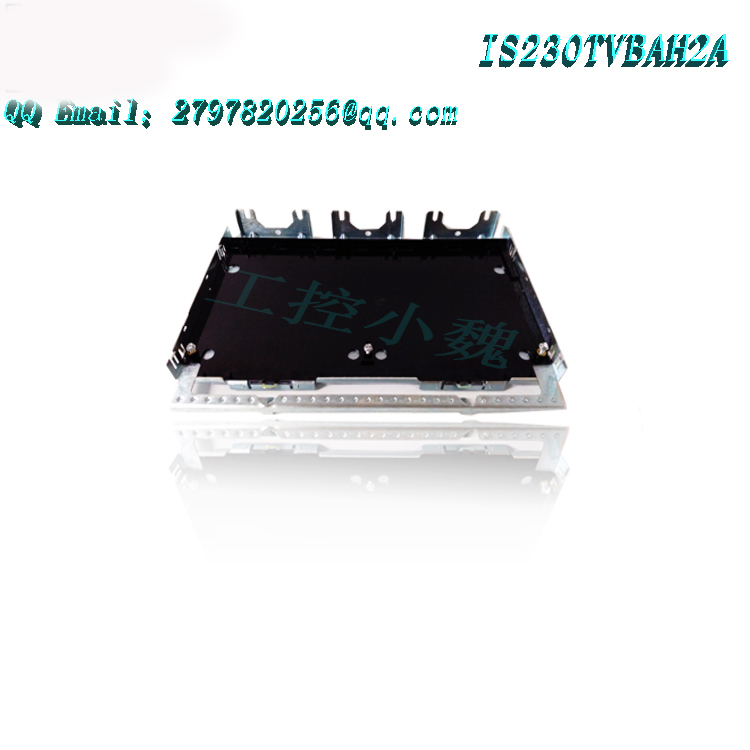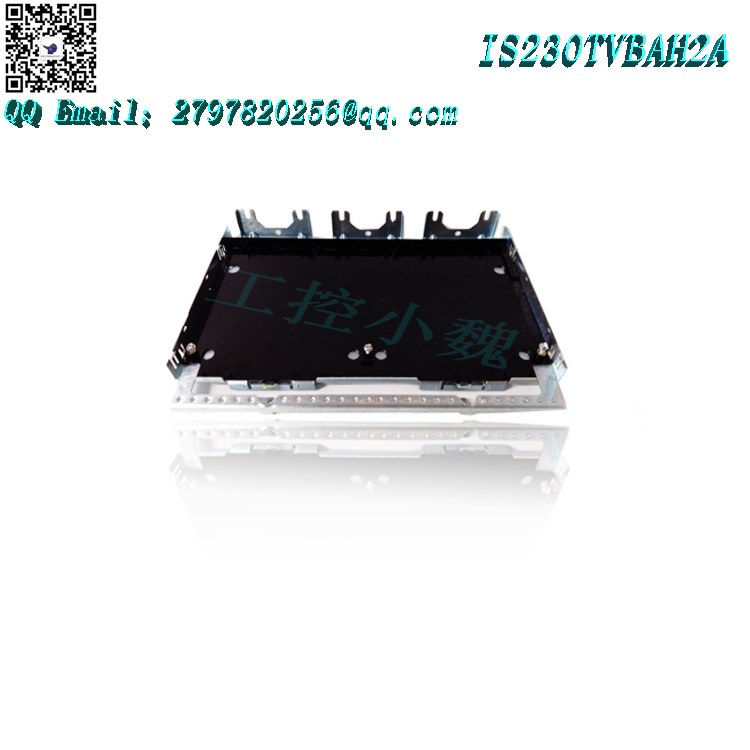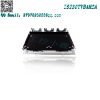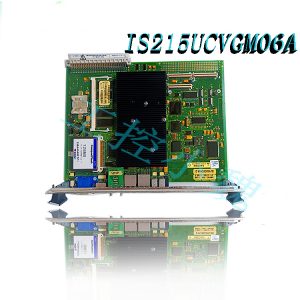Description
IS230TDBTH6A – Discrete I/O board in stock, shipped on the same day.
IS230TDBTH6A – Discrete I/O board in unused and rebuilt state.
To get the best discount on IS230TDBTH6A – Discrete I/O Board, please contact us and we will reply to you within 24 hours.
Product Description
IS230TDBTH6A is a PCB component manufactured by GE for the Mark VI system. Mark VI is a gas and steam turbine management platform released by GE as part of the Speedtronic series. This platform can be designed as triple redundancy or a single system to meet the size and complexity of its related turbine systems.
IS230TDBTH6A is used as a discrete input/output terminal board. This component can be installed using DIN rails. It accepts up to 24 grouped isolated contact inputs. The nominal voltage of these contacts should be 125 V dc. IS230TDBTH6A is the most powerful among the three available versions of TDBT board.
IS230TDBTH6A is constructed using two terminal blocks (TB1/TB2) and positioned on the edge of a long board. The circuit board is also equipped with 12 relays, which are distributed in three rows, with four and forty-nine metal oxide varistors (MOVs) per row, three female connectors (JE1, JW1, and JW2), as well as various resistors, diodes, capacitors, and integrated devices. Circuit. Each input has a filter to suppress surges and reduce high-frequency noise. The board is designed with no jumpers or configurable hardware.
Function Description
IS230TDBTH6A is a discrete I/O board developed by GE. It is part of the Mark VIe control system. Discrete input/output terminal boards are used to achieve TMR redundancy through DIN rail or flat mounting. Three PDIO I/O packets are connected to the controller via Ethernet and plugged into a D-type connector. This board is a TMR contact input/output terminal board that can be installed on DIN rails or flat surfaces. This board accepts 24 sets of isolated contact inputs from external sources, with nominal values of 24, 48, or 125 V DC wetting voltage. To prevent surges and high-frequency noise, the contact input has a noise suppression function. TDBT has 12 C-type relay outputs that can be extended through an optional card. The PDIO I/O package is used in conjunction with TDBT in the Mark VIe system. Three I/O packets are connected to the controller through D-type connectors and communicate through Ethernet. Three PDIO connection points are provided. JR1 will be connected to the R controller through dual controllers on the connector, JS1 to the S controller, and JT1 to both the R and S controllers. The TMR controller provides a single network connection for each PDIO, leading to the corresponding controller. Not suitable for normal operation with a single I/O package.
Features
Relay Option Board Compatibility: Designed for use with relay option boards. This option board can be easily inserted into JW1 and JW2 on the module. The optional board is firmly fixed in place through the force applied by the connector, ensuring a reliable connection.
Terminal point function: There are relay terminal points marked as TB1, and the function of each terminal point depends on the presence of an option board. The tables provided in the document identify specific functions related to each relay terminal point, providing clear guidance for its use and functionality.
External power connection: If the operation of the module or option board requires an external power supply, use the connector on the option board for power connection. This enables the module to receive necessary power from external sources, thereby promoting its normal operation.
Diagnostic feedback: It has the function of monitoring a set of isolated contacts on each relay. This monitoring function provides diagnostic feedback to the PDIO (Programmable Digital Input/Output) system, indicating the status of each relay. By monitoring the status of the relay, this module can effectively detect any issues or faults related to the relay, which helps with effective troubleshooting and maintenance.
PDIO packet position feedback: Ensure that all three PDIO packets receive position feedback. This feedback mechanism enables the PDIO system to understand the status and position of each relay. These pieces of information are crucial for accurately controlling and monitoring relays and connecting devices, enhancing the overall functionality and reliability of the system.
Fuse status detection: When the module is used in combination with WROB, isolation voltage feedback is used to detect the status of the six fuse pairs on the board. This feedback is provided by the connectors of all three PDIO packages. This function can effectively monitor the status of fuses, helping to identify any blown fuses or abnormal situations that may affect the performance of the circuit board.
Installation of IS230TDBTH6A
When installing a circuit board, precise steps must be followed to ensure safe and reliable installation. This installation guide outlines the key procedures involved in installing circuit boards and wiring to achieve seamless integration.
Installing circuit boards
Circuit board and insulator placement: Circuit boards and plastic insulators should be installed on metal plate carriers. This carrier aims to provide stability and protection for the circuit board during operation.
DIN rail installation: To ensure safety and standardized installation solutions, the metal plate carrier is installed on the DIN rail. DIN rails are commonly used in industrial environments to provide a reliable platform for various control and automation components.
Sheet metal component option: Alternatively, the positive insulator can be installed on the sheet metal component and securely fixed to the cabinet. This method provides placement flexibility and is particularly useful when integrating circuit boards into existing cabinet configurations.
Wiring
Terminal block: The connection of the board is directly connected to two sets of 48 terminal blocks. These terminal blocks typically accommodate wires in the range of 24 to 12 AWG, ensuring compatibility with various wire gauges commonly used in industrial applications.
Terminal block allocation: There are two sets of terminals on the board:
Upper group (TB1): This group of terminals is mainly connected to the relay part of the board, promoting control and switching functions related to the relay.-1.jpg)
Lower group (TB2): The lower group terminals are dedicated to contact input circuits and can connect external input signals.
Screw allocation: The screw allocation for the two terminal groups (TB1 and TB2) is the same as the screw allocation on the SRLY relay board and STCI contact input terminal board. This consistency simplifies the wiring process and allows for standardized connections across various board types.
Shielding layer termination: To ensure proper grounding and shielding, the shielding layer should be terminated using a dedicated bracket. This step is crucial for maintaining signal integrity and minimizing electromagnetic interference.
Product attributes
Installation: DIN rails can be used for installation, making it easy to achieve standardized installation in control cabinets and industrial environments. DIN rail installation simplifies the integration of these boards with existing systems.
Contact Input: These boards are designed to accept up to 24 isolated contact inputs. This feature is particularly useful in scenarios where multiple input signals need to be managed, providing versatility for controlling applications.
Nominal voltage: The working nominal voltage is 125 V dc, suitable for various industrial voltage requirements. This rated voltage ensures compatibility with typical industrial power sources.
Motherboard type: In this series, this special variant is the most powerful version. Its enhanced functionality makes it suitable for applications that require powerful control and protection solutions.
Terminal block: The board has two terminal blocks TB1 and TB2, which are arranged on one long edge of the board, making it very convenient. This arrangement simplifies the wiring process and provides a compact and organized connection layout.
Relay: Twelve relays are integrated on the board, arranged in three rows with four in each row. This relay configuration can achieve precise control and switching functions, making it very suitable for applications that require multiple relays.
Metal oxide varistor (MOV): Contains 49 MOVs, enhancing protection against voltage spikes and transient surges. This feature ensures the safety and lifespan of connected devices, and helps protect critical processes.
Connector: The board includes three female connectors, namely JE1, JW1, and JW2. These connectors facilitate external connections and signal routing, enabling seamless integration into larger control systems.-1.jpg)
Surge suppression and noise reduction: Each input on the TDBT board is equipped with a filter specifically designed for surge suppression and high-frequency noise reduction. This feature helps maintain signal integrity and system stability, especially in noisy industrial environments.
Features
Terminal block: This module adopts European style box style plug-in terminal blocks. This type of terminal block provides a reliable and safe connection for the input channel. The box design enhances the convenience of installation and maintenance, enabling efficient wiring and connection management.
Number of channels: Provides 24 dry contact voltage input channels. These channels allow for the connection of various devices or sensors that provide voltage based signals. 24 channels can flexibly accommodate multiple inputs, achieving comprehensive monitoring and control functions.
Input filter: includes a hardware filter with a response time of 4 ms. This input filter aims to eliminate noise and interference in the input signal. By reducing unnecessary noise, filters can ensure clearer and more accurate input readings, thereby enhancing the reliability and stability of module operation.
I/O board fault detection: equipped with a fault detection mechanism. It can detect the loss of contact input wetting voltage, which helps identify situations where the contact input has not formed correct electrical contact. In addition, the module can detect unresponsive contact inputs during testing mode, enabling effective troubleshooting and maintenance.
Maximum response time on and off: The typical maximum response time for input on and off is 25 milliseconds. This fast response time ensures timely and accurate detection and response to input changes, enabling efficient and timely control operations based on received signals.
Contact material: The contact material used in the module is silver nickel alloy. This material has excellent conductivity and corrosion resistance. Silver nickel alloy contacts provide reliable and durable connections, ensuring consistent and optimal performance even in harsh industrial environments.
Contact input
The contact input can be easily connected to the 48 terminals marked as TB2 located at the bottom of the board. These terminals are used as the main interface for connecting contact inputs to the circuit board, allowing for seamless integration into the control system.
In order to provide power to the contact inputs, the board receives contact wetting voltage through a JE1 3-pin Mate-n-lok connector located at the bottom of the board, which is very convenient. The wet voltage output terminals are all connected in series and receive a positive voltage applied to pin 1 of JE1. This arrangement ensures the necessary voltage is provided for all contact inputs to achieve normal and reliable operation.
To adapt to specific installation scenarios, TDBT boards allow users to connect a single wetting voltage lead from the board terminals to a set of remote contacts. This means that multiple contact inputs at a certain distance from the circuit board can be powered by a single wetting voltage lead. This provides flexibility for the installation process, enabling efficient wiring and reducing the number of individual wires required for long-distance connections.
Once a single wetting voltage lead reaches the remote contact group, each contact wire can be reconnected to the corresponding input on the board. This arrangement simplifies the wiring process and helps maintain the cleanliness and organization of the control system settings.
JE1 pin 3 is used as a negative voltage or return wetting voltage terminal. This pin provides the required reference voltage for the contact input, ensuring the complete circuit and normal operation of the contacts.
Configuration
The configuration design of this board is simple and user-friendly, providing flexibility and ease of use for various applications. It is worth noting that the configuration of the board does not rely on jumpers or hardware settings, simplifying the setup process and ensuring effective integration into the control system.
The WROBH1 board is one of the optional boards that can be used with TDBT, providing additional functions for relays. The WROBH1 board includes six jumpers, allowing users to individually power on or off each relay. By default, install all six jumpers to provide power to all relays on the board.
However, some scenarios may require the use of relays as dry contacts without the need for power distribution. In this case, specific relay jumpers can be selectively removed from the board. By removing the jumper from the relay, the power supply will be disconnected, effectively transforming the relay into a dry contact.
The ability to remove individual jumpers provides a customizable and effective way to adapt to different requirements and applications. Users can easily configure the board according to their specific needs, whether they need relay distribution or prefer to use relays as dry contacts.
By providing this simple jumper based configuration, the board can ensure the versatility and adaptability of various industrial control systems. The ability to modify the power allocation of each relay can accurately control the operation of the circuit board, thereby helping to optimize performance and simplify maintenance.
Overall, without the need for jumpers and hardware settings, coupled with the optional WROBH1 board with separate jumpers, a seamless and customized configuration process can be achieved. This user-friendly design helps to save time and effort during installation, and ensures reliable and precise control of contact inputs and relay outputs in industrial applications.
Frequently asked questions
What is IS230TDBTH6A?
It is a discrete I/O board developed by GE
What type of input can the board of directors accept?
It accepts 24 isolated contact inputs from external sources, with nominal values of 24, 48, or 125 V DC wetting voltage.
Does the contact input of this board have noise suppression function?
Yes, the contact inputs on the board have noise suppression function, which can prevent surges and high-frequency noise.
How many relay outputs does TDBT have?
This board has 12 C-type relay outputs.
What types of terminal blocks are available in all terminal board versions?
All terminal board versions have pluggable terminal blocks.
How does the compatibility of relay option boards work? Where is it connected to the module?
The relay option board can be easily inserted into the JW1 and JW2 connectors on the module. It is firmly fixed in place through connectors to ensure a reliable connection.
What is the purpose of the terminal points marked as TB1 on the module? How are they used?
This module has relay terminal points marked as TB1, and the functionality of each terminal point depends on the presence of an optional board. This document provides a table that identifies specific functionalities associated with each relay terminal point and provides clear guidance on its usage and functionality.
When do I need an external power connection? How to achieve it?
If the operation of the module or option board requires an external power supply, use the connectors on the option board for power connection. This enables the module to receive necessary power from external sources to ensure normal operation.
What is the significance of diagnostic feedback? What are the benefits of it for PDIO systems?
This module has the function of monitoring a set of isolated contacts on each relay. This monitoring function provides diagnostic feedback to the PDIO system, indicating the status of each relay. This helps to effectively detect issues or faults related to relays, thereby facilitating effective troubleshooting and maintenance.
All products on this website are special products, and market prices have been fluctuating,
The specific customer service quotation shall prevail, as the product is a new product and the price is not genuine,
Please confirm the model, product, price, and other detailed information with customer service before placing an order. The website has been used,
The new one is for sale, please contact customer service to communicate.
Warehouse stock recommendation:
DS200DCFBG2BNC
DS200DCFBG1BNC
DS200DCFBG2BNC
DS200FECBG1A
DS200DDTBG1A
DS200DDTBG1A
DS200SHCAG1B
DS215DMCBG1AZZ03B
DS200TCQCG1A
DS200TBQCG1A
More……



.jpg)
.jpg)

-100x100.jpg)
-100x100.jpg)

-300x300.jpg)
Reviews
There are no reviews yet.